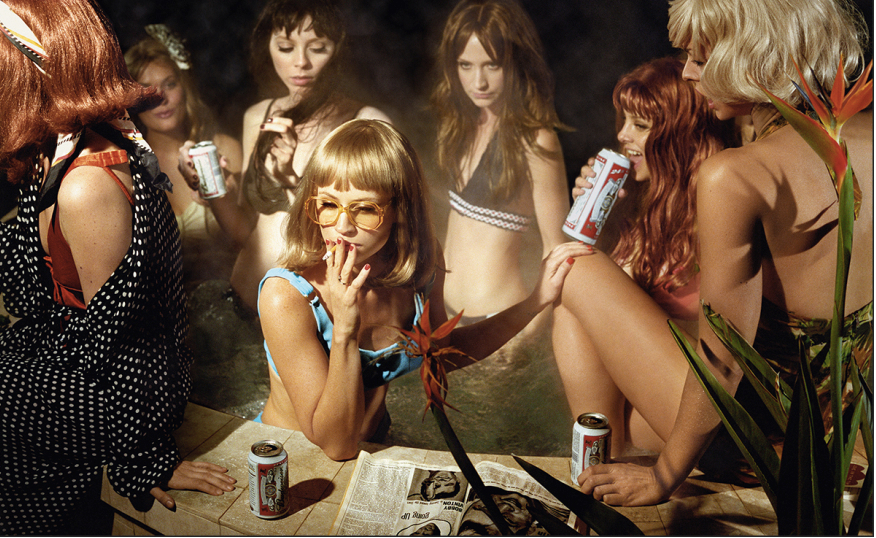In a rather flattering introduction to the new show at FOAM in Amsterdam, Alex Prager is described as being rooted in: “……. the photographic tradition of William Eggleston, Diane Arbus and Cindy Sherman, each of whom mastered the art of freezing the indeterminable everyday moment.” I am sure being in the company of those that most photography enthusiasts, and novices, recognize for their brilliance, will make lots of people flock to FOAM, Amsterdam.
Eggleston is one of the early proponents of colour photography. Arbus observed people, mostly on society’s margins, and Sherman is famous for her Untitled Film Stills. All three are gods on the Mount Olympus of Photography, yet, each is known for a very different contribution to photography. I am not sure that you can find any overlap between the three, nor even with the best intentions any reasonable link to Alex Prager.
I might buy the argument that there is a bit of common ground between Sherman and Prager, but even there, I have trouble seeing the relevance. In Sherman’s break through work Untitled Film Stills, she uses herself as a model to make photographs that could double for those we would have seen in the front lobby of any movie theater through the 1980s. The genius of Sherman’s work is in the story she is not quite telling in a single black and white photograph. Sherman says nothing. There is no title. She lets the viewer develop a story in their mind’s eye. Different hair and make-up, different looks, different distances, different settings evoke different film genres. There isn’t a Museum today that would not fall over itself to have a few Sherman Untitled Movie Stills in their collection. The photographs are beautifully staged and executed in the standard 8” x 10” format that you would see at the movie theater.
William Eggleston made photographs that, one might say, broke the colour barrier in photography. Serious photographers before Eggleston were black and white photographers. Sure, others contemporaries shot in colour, but their success did not happen till much later when they were ‘discovered’. Think Saul Leiter and Fred Herzog. Eggleston uses saturated colour. His compositions, which are often deceptively simple and sometimes by appearance, almost random. Eggleston’s photographs are shot analog and printed with the best available materials, as dye transfer prints.
Diane Arbus, is the photographer with whom I have the most difficulty finding any common ground with Prager. Arbus usually shot square format, full frame photographs of consenting people on the margins of society. Portraits, one might argue. She showed those that were outsiders and often disadvantaged. Always photographing in black and white, Arbus is best known for her posthumous 16” x 20” photographs, printed by Neil Selkirk.
Now, let us have a look at Prager. She comes up with good stories, or suggestions of stories for her pictures, which are often helped along by a title (unlike Cindy Sherman, who did not title her film stills, just giving them numbers). Prager then uses advanced computer graphics, takes a sometimes large number of digital photographic files and blends them to create the setting and background she is looking for. She prints them in large sizes, in hyper-saturated colour. One might say, that Parger is more like Jeff Wall than Sherman, Eggleston or Arbus, but maybe less cerebral?

So my message to the person writing the infomercial copy for the Alex Prager show: Colour by Eggleston. Film still by Sherman? What by Arbus? I get that you need to get people through the door. I understand that: ‘Come and see Alex Prager’s oversize, saturated colour digital prints, made using advanced software skills, blending multiple digital files, made to resemble could-be-real-life situations…..’, might not sell, as many tickets.
Let us call a spade a spade, and let us not invoke those that were trailblazers, to boost sales. This is not fair to Alex Prager, and certainly not fair to Eggleston, Arbus and Sherman.
Harbel


